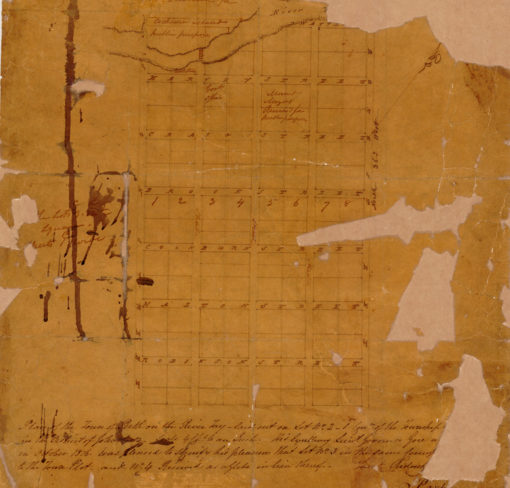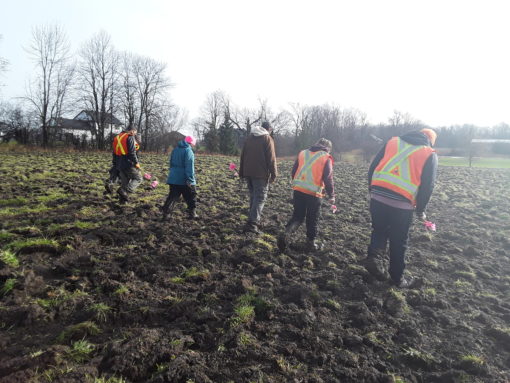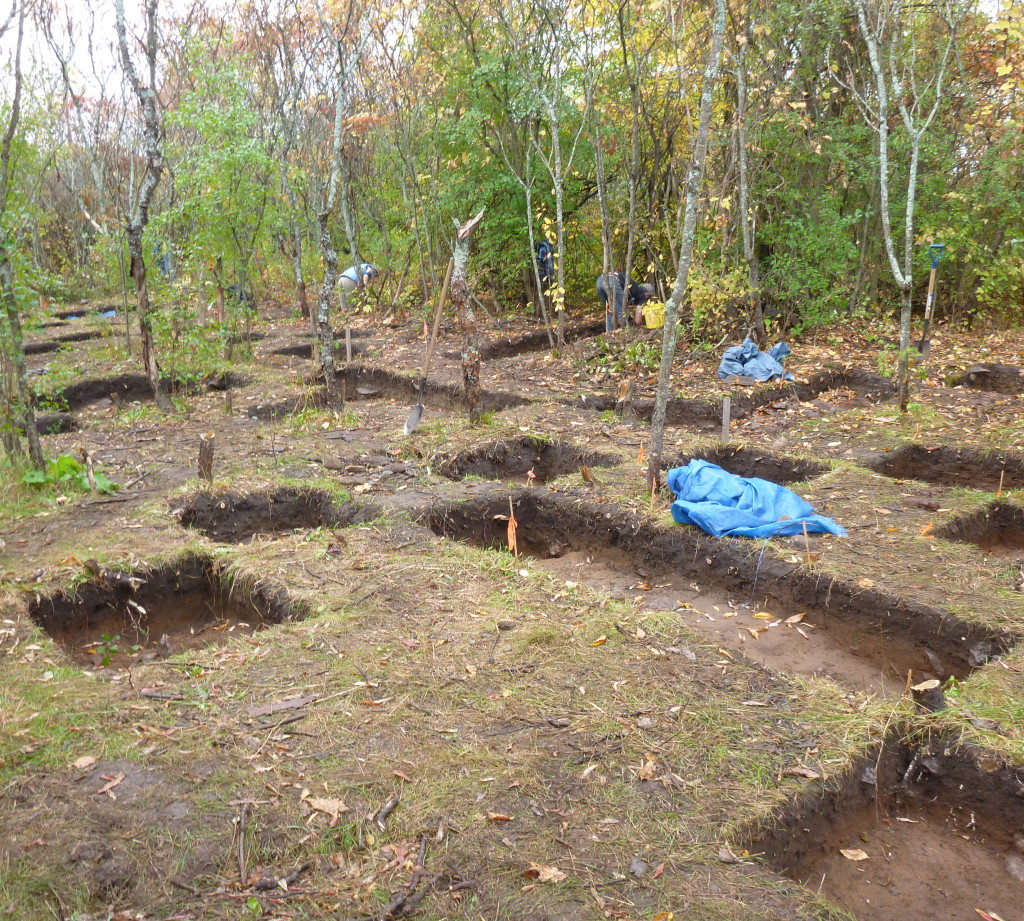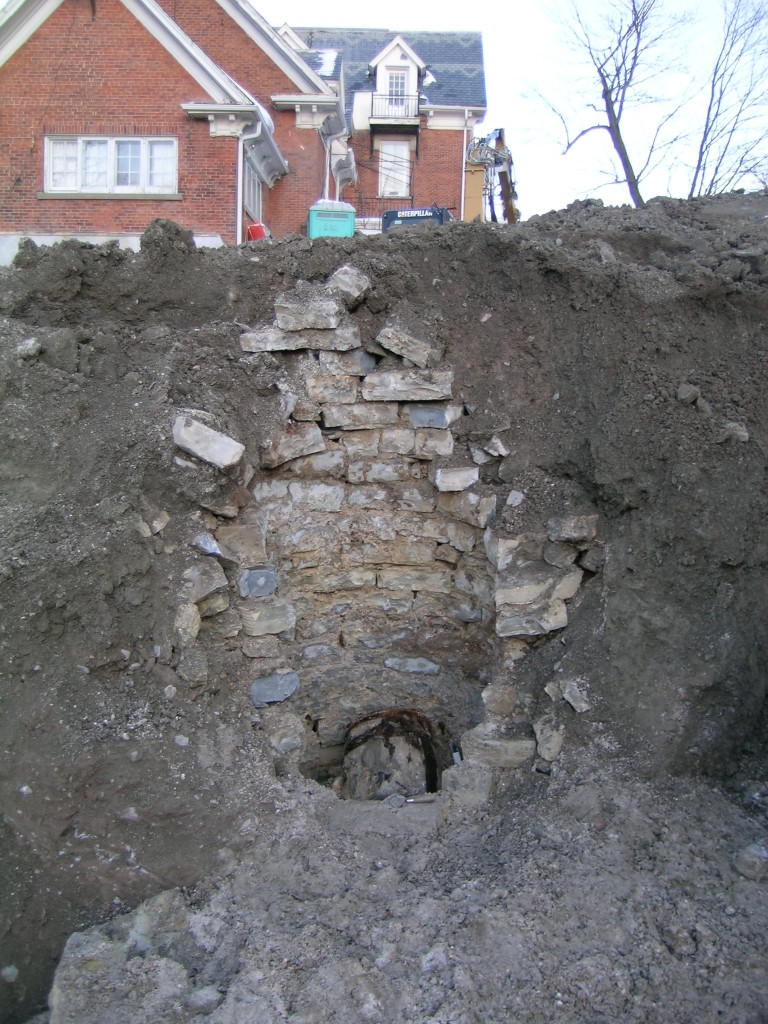Consultant archaeologists in Ontario follow a four-stage assessment process. Not all land-use planning and development projects will require all four stages to be carried out. They are summarized below to inform clients about the possible project requirements.
Stage 1. Background Study and Property Inspection
The consultant archaeologist reviews the geographic, land-use, and historical/archival information for the project (all lands that are part of the development proposal) and the relevant surrounding area through a background study. When necessary, this may be supplemented by a property inspection. If the study determines there is potential for archaeological resources on this site, Stage 2 is undertaken.

Stage 2: Property Assessment
The consultant archaeologist conducts a general survey of the whole property to identify all archaeological resources that may be present. The survey consists of walking a ploughed field looking for artifacts lying on the surface of the ground or test pitting unploughable areas (e.g., forested areas, woodlots, old pasture) at regular intervals and screening the soil for artifacts. Special conditions, such as brownfield (potentially contaminated) properties or deeply buried archaeological resources, may require alternative strategies. If archaeological sites are identified, Stage 3 assessment is required.

Stage 3: Site-Specific Assessment
This stage focuses on the archaeological sites recommended for further assessment after Stage 2. Stage 3 includes mapping the surface extent of each archaeological site and excavating a number of test units and/or test trenches. The goal of this stage is to accurately determine the physical extent of the archaeological sites, to more completely evaluate their cultural heritage value or interest and, when necessary, to make recommendations for conducting Stage 4 strategies to mitigate development impacts. For some archaeological sites, no further work may be recommended at the end of Stage 3. For those archaeological sites where Stage 4 is recommended, determining an appropriate mitigation plan will involve reviewing potential strategies with the client and may also require engaging Aboriginal and local communities.

Stage 4: Mitigation of Development Impacts
Stage 4 includes implementing long-term protection strategies for archaeological sites that would be affected by the project. If protection of the site is not a viable option, the consultant archaeologist conducts an excavation to document the site and remove the artifacts before construction begins.

